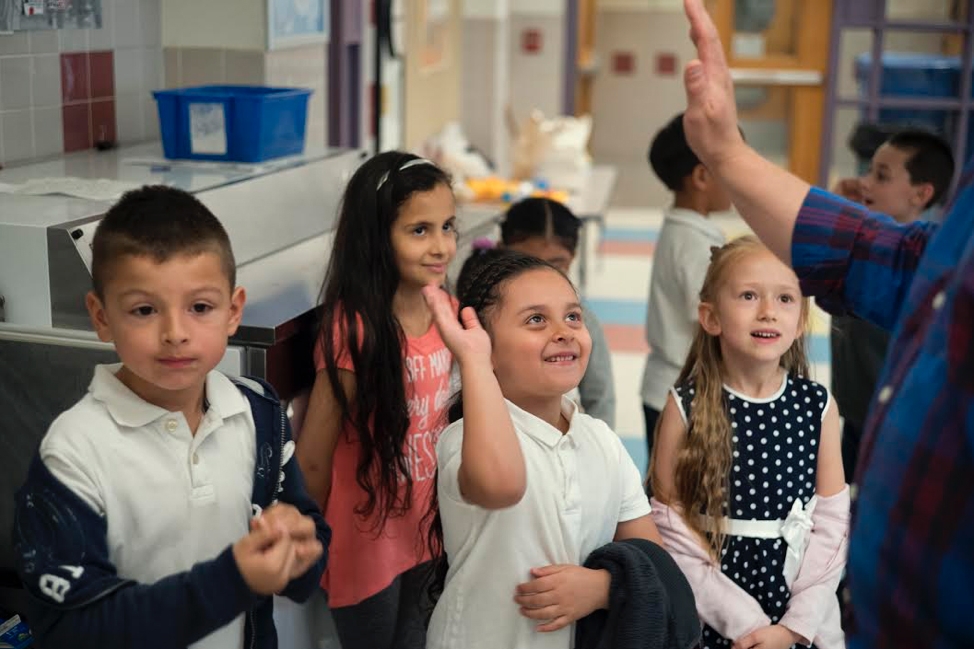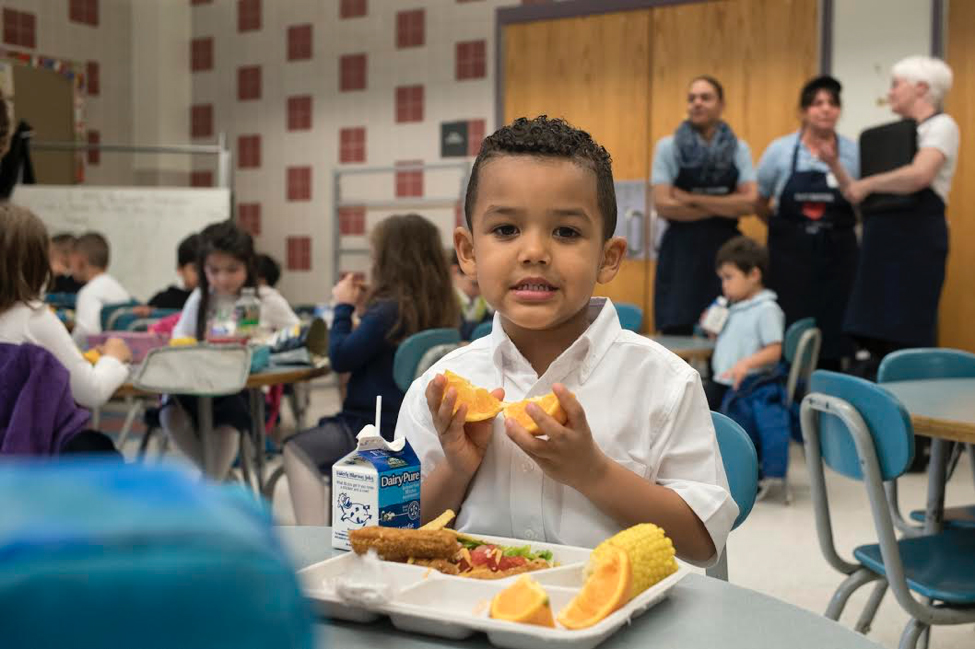
The Shah Family Foundation has been working closely with The Boston Public Schools Food and Nutritional Services and the City of Boston on a pilot project in East Boston schools that provides fresh, healthier food to students in BPS. This program creates finishing kitchens at satellite schools who have traditionally relied on frozen, vended meals. Students in these schools are now served fresh food including a full salad bar everyday. In his recent inaugural address, Mayor Walsh highlighted this initiative and announced that the City and BPS will begin expanding the program to more schools across the City.

When I heard about our mission to transform the food in Boston Public Schools, I had no idea what the status quo. I was told that 25% of schools had a traditional cafeteria model and the other 75% were serving “vended meals”, and had only a microwave and a freezer. What goes into a vended meal? The food comes plastic wrapped from a New Jersey warehouse, it’s shipped via refrigerated truck, put in a freezer, and then reheated for a few minutes in order to meet nutritional standards before being given to the students, who then have to unwrap their lunches before eating them.
It didn’t sound good when I heard it, and it didn’t look good when I first saw a crate of plastic wrapped apples and pears. But the kids didn’t seem to mind it. How could they if they have never had the chance to eat anything else? Such was the genesis of our intervention. After outfitting kitchens at three schools in East Boston with a full suite of kitchen equipment (ovens, sinks, hot storage, etc.), we had three schools that will be transitioning from vended meals to meals that are cooked that morning, with fresh ingredients. What would the students think about the new food?
I have been stationed at the Patrick J. Kennedy School, a K-5 school in East Boston for each day the fresh-cooked food was served, and I have been able to see the reaction of the students as they have moved from one-day a week of fresh cooked food, to two days, to three, and eventually they will be served food cooked in their own kitchen every day of the week.

The reaction of the students has been predictable: a bit of confusion, a bit of excitement, and a bit of wonder. “What is this” asked one student, holding up a potato wedge that had been sliced and baked earlier that day. “It’s a potato”, I said. “Really? It tastes like a french fry!” said the incredulous first grader. Instances like these are scattered throughout the lunch period. For the first couple of days, the kids were calling it “hotel food” or “buffet food”, such was their unfamiliarity of lunches not cooked and packaged three states away. Now their familiarity has them eager for more. The teachers might be the biggest proponents of the change in meals. With their relative wealth of lunch knowledge and experience compared to their ten year old students, they recognize the value in the new system. Teachers have been drawn to the cafeteria before the lunch period by the tantalizing aromas of roasting garlic and simmering tomato sauce. In many cases, they eat the food too, with near universal acclaim (sweet potato fries are a major hit with the teachers). Predicated on their own experience with the food, the teachers have become advocates. On days when they know real food will be served, they are busy convincing their students not to bring a lunch from home. One recent class had only one home-brought holdout. With his classmates bragging about the chicken and rice dish they had just eaten, he promised to relinquish his spiderman-themed lunch box at the next opportunity.
The kitchen staff has been a mixed bag. The old system was set up so that nothing more than heating and serving was required: no dishes to wash; no prep work; no equipment to learn how to operate; no cooking at all. There were pockets during which no work was required at all, leaving a lot of time for idle conversation and social media. Now, they are cooking from scratch and, as strange as it sounds, not everyone in the kitchen has a background in cooking. Those who do have loved the change. It gives them greater sweat equity in the smiles of the kids who are enjoying lunch. With a predictable schedule number of meals to serve, it’s generally less stressful than a typical restaurant kitchen during lunch hour. Plus who doesn’t like kids? Those with no cooking experience have felt the strain. There are a lot of new skills to learn and new responsibilities in the kitchen. From a high level, it means that the labor is much more efficient, but from the first-person perspective of some workers, it just means doing more in the same amount of time.
As we progressively move to more days in which the students are eating fresh-cooked food, we’re busy working out some of the speed bumps that have appeared along the way: moving the kids through the line efficiently to make sure everyone has enough time to eat; having a way for the smaller students to see what food is being served that day before they order it; moving unused menu items efficiently to the next day; and a host of minutiae to work through. Once these are solved, we will have a model that can be reproduced in other schools. Next stop: breakfast!
Alex Judge is a Senior Analyst at The Shah Family Foundation in Boston, Massachusetts. He oversees the education portfolio and works closely on the foundation’s major initiatives. Alex is a native of Williston, Vermont, where he got his first experience in food service by delivering pizzas.
This post was originally published on the Shah Family Foundation blog.




